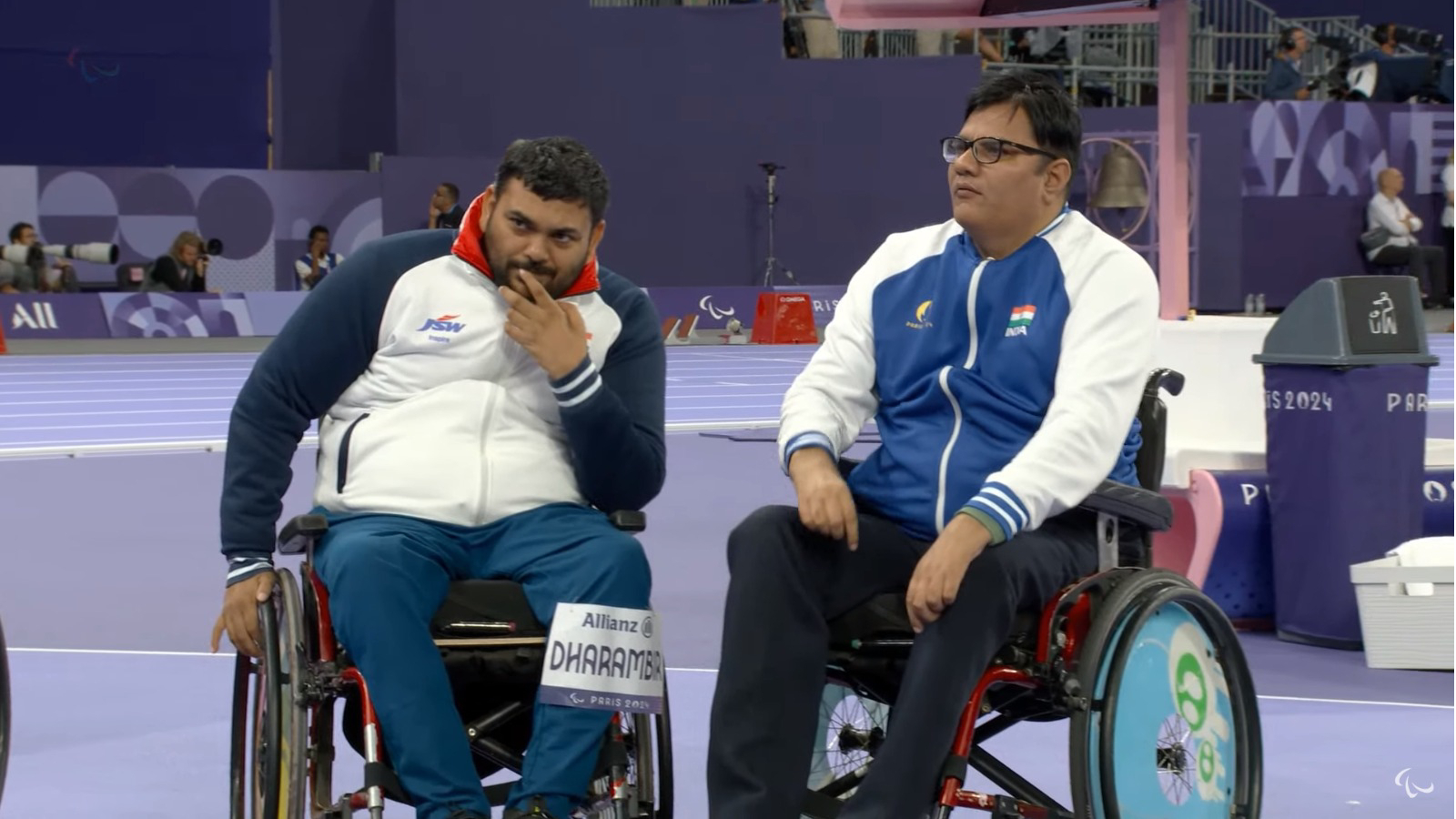Amit Kumar Saroha remembers the day when a friend took him to meet then 23-year-old Dharambir Nain, who had been confined to his village home near Sonepat after a spinal cord injury.
“I told him: ‘Beta, has ke jiyenge toh zindagi aaram se kat jayegi. Agar ro ke jina hai, toh zindagi bahut lambi kategi (Son, if we live life with a smile, it will become easier. If we cry, then life will become longer and a burden),” Saroha recalls what he told the youngster who became Paralympic club throw champion in the French capital on Wednesday.
Dharambir suffered his injury on June 2, 2012 during a dive in a canal, when he was visiting his aunt in a village near Sonepat. The Badana village native, would spend more than a year in rehabilitation at home with his mother.
“My father died in 2011. When I suffered the injury in 2012, the only worry I had was how I would support my mother. When Amit bhai met me, the only thing he told me was that he needs full dedication from my side,” the champion told The Indian Express.
Saroha is himself a two-time world para silver medallist and two-time Para Asian Games champion and was competing in the same F51 category in which Dharambir won the gold with a best throw of 34.92m. Saroha finished 10th in the event.
Saroha, who had suffered a spinal cord injury in a car accident at the age of 22, was initiated into para sports when he met Jonathan Sigworth, an American wheelchair rugby player in the late 2000s. The Haryana athlete would start competing in discus throw and would win a silver medal in the F51 category at 2010 Guangzhou Para Asian Games.
But it was a meeting with English club thrower Anthony Hughes that prompted Saroha to switch to the hitherto unknown para sport in India.
Within a year, Saroha and Dharambir stood on one podium together when Saroha won the gold in club throw and the latter the bronze at the 2015 para nationals in Ghaziabad. The next two years would see Saroha training Dharambir at his village Bayanpur with makeshift equipment. Saroha would finish fourth at the Rio Paralympics with Dharambir ninth.
“When we trained at my village, there was almost no special equipment. Whatever equipment I got from my cash awards was also shared by Dharambir and other fellow athletes like Ekta Bhyan and Rinku Hooda. When Dharambir started, he would throw the club close to 13-14m. Sometimes, I needed him to train extra or to correct his technique, and would scold him mildly but Dharambir always took it in good spirit,” Saroha told this paper.
Competing together
Dharambir’s first podium finish at a major international event was the silver medal at last year’s Hangzhou Para Asian Games, where Saroha won the bronze. Wednesday’s silver medallist Pranav Soorma had won the title in Hangzhou.
Prior to the Paris Paralympics, Saroha had also organised a cash award function for his trainees. “They all are like my brothers, sisters and children. If I can achieve something in para sports after my accident, I also want each one of them to create an identity for themselves,” shares Saroha.
Dharambir won the bronze at this year’s world para championships in Kobe, where he registered a throw of 33.61m. It was 3.36m farther than Saroha’s best throw of 30.25 at the Para Worlds in 2017. On Wednesday night, as Dharambir made four fouls during the final, Saroha would be seen guiding him before he got a yellow card from the officials too.
The medal was a balm for Saroha also after he missed out on the podium at the Rio Paralympics.
“The glue on his hand was coming off and hence Dharambir struggled. Even when I was competing, my focus was also on Dharambir. Once he made that winning throw, I felt as if I had become the champion.”
As for Dharambir, he sees Saroha as his competitor, guide, friend, brother and a tough mentor.
“Bhai sahab kabhi gussa karte hain par woh mere achhe ke liye hi hota hai. From a coach, he has evolved into my elder brother, friend and much more. This medal is for India as well as for him, who is the pioneer in club throw in the country,” the Paralympic champion said.



